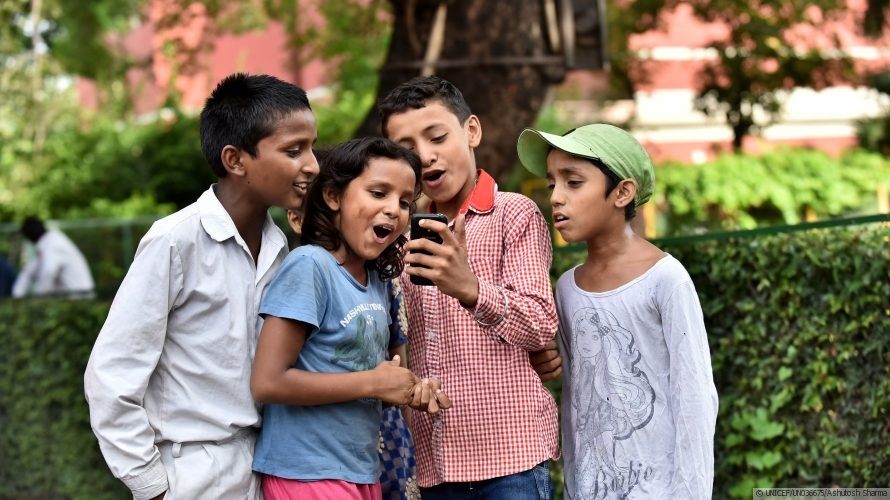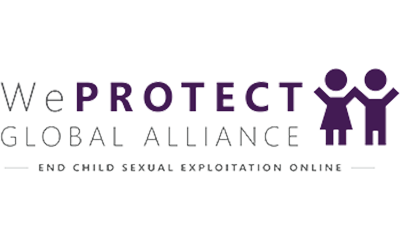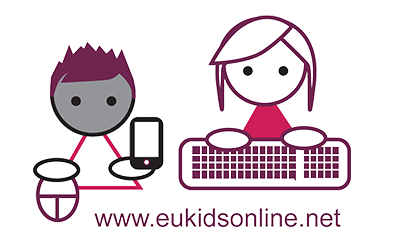The State of the World’s Children 2017: Children in a digital world (SOWC) presents UNICEF’s first comprehensive look at the different ways digital technology is affecting children’s lives and life chances, identifying dangers as well as opportunities. It argues that governments and the private sector have not kept up with the pace of change, exposing children to new risks and harms and leaving millions of the most disadvantaged children behind.
For better and for worse, digital technology is now an irreversible fact of our lives. In a digital world, our dual challenge is how to mitigate the harms while maximizing the benefits of the internet for every child. (Anthony Lake , UNICEF Executive Director)
The report explores the benefits digital technology can offer the most disadvantaged children, including those growing up in poverty or affected by humanitarian emergencies. These include increasing their access to information, building skills for the digital workplace, and giving them a platform to connect and communicate their views.
But the report shows that millions of children are missing out. Around one third of the world’s youth – 346 million – are not online, exacerbating inequities and reducing children’s ability to participate in an increasingly digital economy.
The report also examines how the internet increases children’s vulnerability to risks and harms, including misuse of their private information, access to harmful content, and cyberbullying. The ubiquitous presence of mobile devices, the report notes, has made online access for many children less supervised – and potentially more dangerous.
Additional facts from the report include:
- Young people are the most connected age group. Worldwide, 71 per cent are online compared with 48 per cent of the total population.
- African youth are the least connected, with around 3 out of 5 youth offline, compared to just 1 in 25 in Europe.
- Approximately 56 per cent of all websites are in English and many children cannot find content they understand or that is culturally relevant.
- More than 9 in 10 child sexual abuse URLs identified globally are hosted in five countries – Canada, France, the Netherlands, the Russian Federation and the United States.
Only collective action – by governments, the private sector, children’s organizations, academia, families and children themselves – can help level the digital playing field and make the internet safer and more accessible for children, the report says.
The report includes a set of recommendations to help guide more effective policymaking and more responsible business practices to benefit children. UNICEF Innocenti’s child protection specialist Jasmina Byrne played a key role in drafting the recommendations which include:
- Provide all children with affordable access to high-quality online resources.
- Protect children from harm online – including abuse, exploitation, trafficking, cyberbullying and exposure to unsuitable materials.
- Safeguard children’s privacy and identities online.
- Teach digital literacy to keep children informed, engaged and safe online.
- Leverage the power of the private sector to advance ethical standards and practices that protect and benefit children online.
- Put children at the centre of digital policy.
Global Kids Online Principal Investigators, Jasmina Byrne and Sonia Livingstone, who contributed insights to the report, explain:
Digital policies need to be mindful of children’s needs and rights, particularly the most disadvantaged. They need to be evidence informed and they need to continuously evolve to adapt to technological change and emerging challenges. (Jasmina Byrne, UNICEF Innocenti, Child Protection Specialist)
As more children go online around the world, it’s vital that policy and practice regarding digital technologies fulfil children’s rights to provision, privacy and participation as well as protecting them from harm. Global Kids Online’s evidence helps underpin this effort. (Sonia Livingstone, London School of Economics and Political Science, Professor of Social Psychology)
And digital networks like the Dark Web and cryptocurrencies are enabling the worst forms of exploitation and abuse, including trafficking and ‘made to order’ online child sexual abuse.
The report presents current data and analysis about children’s online usage and the impact of digital technology on children’s wellbeing, exploring growing debates about digital “addiction” and the possible effect of screen time on brain development.
Further resources
State of the World’s Children 2017– download full report
Download the statistical tables
Challenges of parental responsibility in the digital age (report-based web story by Jasmina Byrne and Sonia Livingstone)
Young and Online: Children’s perspectives on life in the digital age (SOWC Companion report by Amanda Third, Delphine Bellerose, Juliano Diniz De Oliveir, Girish Lala, and Georgina Theakstone)
UNICEF Innocenti’s article on SOWC 2017
You can sign up to receive the latest research news from Global Kids Online by email. Please forward this message to anyone you think may be interested.
Author: reposted with permission from UNICEF









